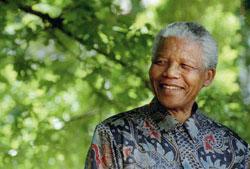


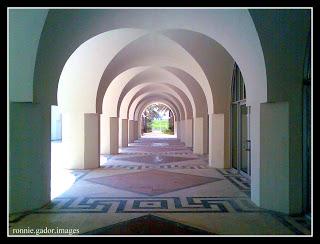
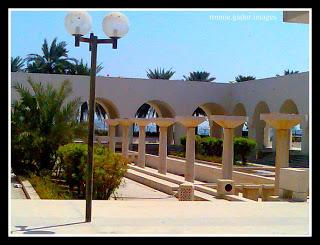
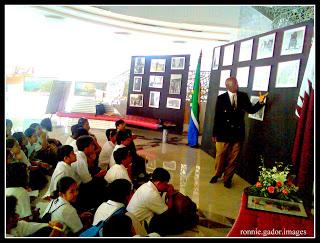
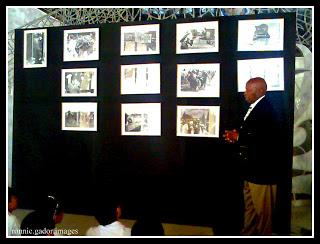
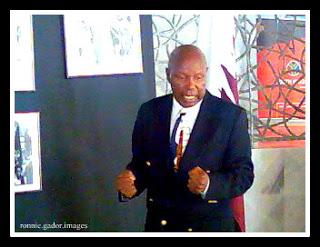
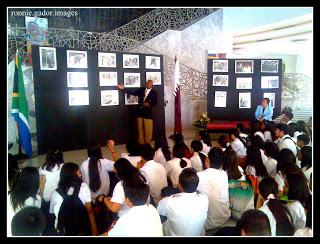
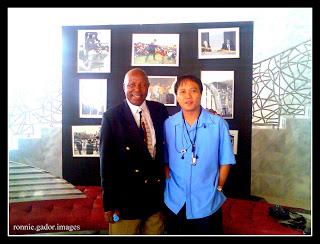
My meeting with Alf Kumalo in 2007, was strictly on an invitation from the South African Embassy in Doha. They also invited some schools to get the chance of meeting South Africa's master photographer. The Philippine International School in Qatar was included in the shortlist of attendees. He was in Doha for a series of lectures and exhibits at the Qatar National Theater. His unselfish sharing of his thoughts about his masterpieces, enlightened and inspired the Filipino students. He was proudly exhibiting his prize winning photos in black and white.
Here is a simple introduction I got from The Star, 1 November 2004, p.8. Alf Kumalo is a World renowned photo-journalist and social documentary photographer.
Alf Kumalo was born in Alexandra near Johannesburg. He first worked in a garage doing various jobs and then started freelancing for various publications, selling his photographs where he could. He did a lot of work for the Bantu World.
In 1956, he found a permanent position at the Golden City Post.
In 1963, while working for Drum magazine, he was selected together with Harry Mashabela to go and shoot a story about African students in the Iron Curtain countries. The two made the front cover of the next edition of the magazine, Drum men go to Europe.
While in London, he interviewed Cassius Clay and then found out that he had won first place in a photographic competition. The prize was an Austin Cambridge motor car.
Kumalo had used his African names Mangaliso Dukuza because he wanted the judging to be mpartial and not influenced by his reputation. A picture of him and his award was published by the Star on its front page. A lot of black people talked about it for days afterwards, because in those days they would only get on to the front pages of white newspapers if they were thieves.
Despite the prospect of being arrested and assaulted, Khumalo kept on taking pictures, ometimes at personal cost. David Hazelhurst recalled: One day in 1963, when I was editor of Drum magazine, Alf Khumalo walked into my office carrying a picture. It showed a burly policeman delivering a vicious kick between the legs of reporter Harry Mashabela from behind. Such was the power of the kick you could see the shape of his boot exploding through the front of Mashabela’ trousers.
It was the year of the jackboot of John Vorster, habeas corpus had disappeared, the 90-day-detention without trial Act had given policemen a license to kill and assault behind closed doors with impunity.
The police hated journalists – and photographers in particular, for their pictures portrayed the truth about an evil system, and Kumalo, despite warnings, risked a severe beating to take the Mashabela picture. He had tried to sell it to several papers with no success.

